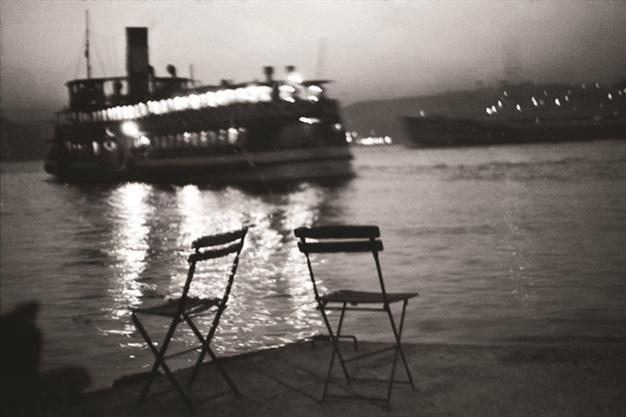Istanbul Modern presents selection from its photography collection
ISTANBUL - Hürriyet Daily News

Ara Guler
Istanbul Modern is hosting After Yesterday, a selection of its photography collection gathered since the museum’s founding. Featuring 179 works by 53 artists, the show will be held between Feb. 16 and June 3 at the Istanbul Modern Photography Gallery and on the museum’s ground floor. A further 66 works by 213 artists will also be on display in digital format.Bringing together modern and contemporary examples of photography in Turkey, the exhibition displays the technical and conceptual development of photography from the Ottoman Era to the present day. It aims to show the adventure of photography in reverse chronology, starting at the point reached by present day photography and moving back to the Pera of the 1800s.
After Yesterday is curated by Engin Özendes, who has been the director of the Photography Gallery since the day it opened and has thus shaped the collection’s identity. While presenting viewers with the photographic story of the past and the present, the show also sheds light on how the collection developed over the years.
220 artists in 26 photography exhibitions

She added that at the Istanbul Modern Photography Gallery, works by a total of 220 artists from both Turkey and abroad have been displayed in 26 photography exhibitions to date. She also said the photography department has exhibited works by young artists from Turkey and samples from its collection have featured in shows held in Austria, France, Russia, and Greece.
The first steps of Ottoman photography
Only a year after the invention of photography, French painter Horace Vernet and daguerreotypist Goupil Fesquet set sail from France to arrive in Izmir in 1840. Such pioneers spread photography around the world, and were adventurers, writers, people interested in archaeology, painters, and architects. These traveling photographers initially took landscape photos in cities of the East, which seemed different to them; later they turned their camera to people in the streets as well. With people becoming part of the composition in photographs of monuments, bazaars, streets, and village markets, local studios were soon opened in the Ottoman Empire. The first studio owners were Armenian and Greek. Starting in the 1850s these studios sprang up on the Grand Rue de Péra, (today’s İstiklal Caddesi), where a Western lifestyle was most visible in Istanbul. Featured in the exhibition are the Abdullah Frères, Sébah & Joaillier, Guillaume Berggren, Mihran İranyan, and the Gülmez Frères, who all left us pictures from the 19th century.
The Republic and documentary photography
The most prominent documentary photographer from the early years of the Turkish Republic was Othmar Pferschy, who traveled throughout Turkey and took thousands of pictures. The photos from those years reflect a particularly positive and beautiful image of the country, showing its historical places, people in natural landscapes, and the modernization of cities.
The community centers (“halkevleri”) that opened in 1932 greatly contributed to the further spread of photography. While it became common for photographers to travel Anatolia and document it, the interest urbanites started showing in rural areas and the tendency to document the realities therein was significant. Artists such as Aziz Albek, Cafer Türkmen, Nevzat Çakır, İbrahim Zaman, Gültekin Çizgen, Arif Aşçı, and Atilla Torunoğlu produced major examples of documentary photography with their original interpretations.

Iranian
Over time documentary photography was replaced by conceptual approaches and constructed photographs, in which the artist’s intervention could be more strongly felt.
During the first half of the 20th century, when digital possibilities had not yet developed, experimental works were created using darkroom techniques. We might consider photographs produced under the enlarger with multiple exposures as predecessors of today’s digital manipulations, and as the first examples of constructed photography. The photographs by Mustafa Kapkın and Baha Gelenbevi featured in the show are examples of this type of experimental work. Also included in the exhibition is Şahin Kaygun who, starting in the 1980s, added paint and collage to his photographs. His work can be seen as one of the first examples of painting-photography in the photography of Turkey.
In approaches that take everyday life as their starting point, the city itself becomes an area for artists to experiment in. Observing the city and wandering through its streets, photographers capture the city’s architecture, its chaotic structure, walls, and people from their individual perspectives. Sevim Sancaktar, Burhan Doğançay, and Selim Güneş obtain conceptual effects in their photographs of city walls taken with no intervention on the walls. Jak Baruh, Burcu Aksoy, and Murat Germen achieve a similar effect using digital techniques.

















